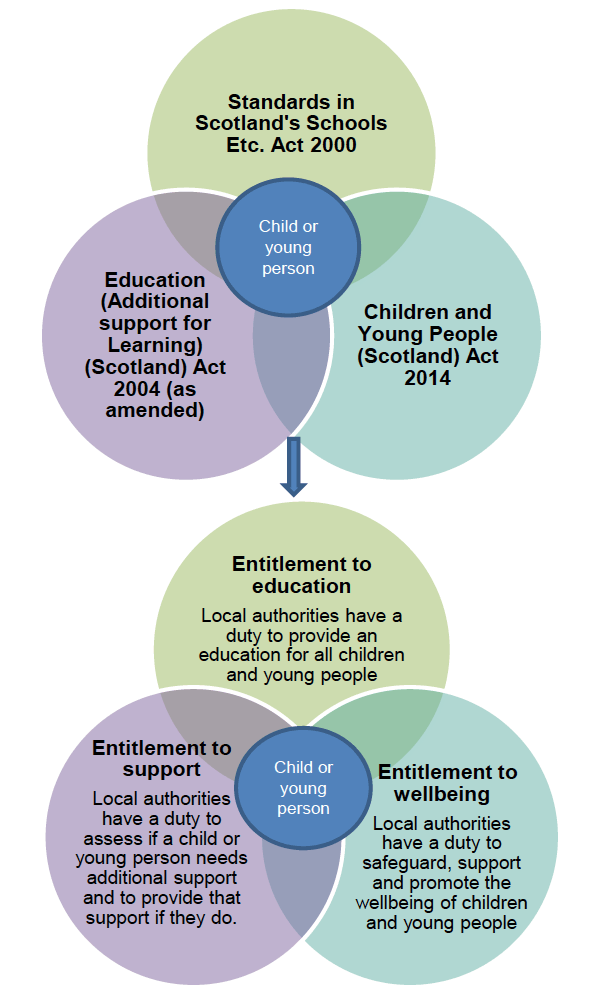Consultation on excellence and equity for all: guidance on the presumption of mainstreaming
The guidance aims to ensures that local authorities have the guidance required to help their decision making in applying the presumption of mainstreaming.
3 Deciding on the right provision for a child or young person
16. This chapter is primarily aimed at local authority decision makers. The presumption of mainstreaming is not a blanket application. The legislation presents tests against which choices can be made. This section is for local authorities to support decision making.
Entitlements
17. Under the legislative framework there are three core elements – education, support and wellbeing.

Presumption of mainstreaming – options for provision
18. The requirement to provide education in a mainstream setting has been in legislation since 2002. The legislative and policy landscape has evolved over time, reflecting increasing aspirations for Scotland’s children and young people and changes in practice. This is also the case in relation to the way in which learning is delivered across the country. In Scotland, there is a range of provision available to meet children and young people’s additional support needs. These include:
- Mainstream provision,
- Special school provision,
- Provision where the pupils’ needs are met through a mixture of provision, either within a unit within a mainstream school or through a mix of two different provisions. This forms a package of learning and support to meet individual needs, often referred to as flexible provision or shared provision.
19. Mainstream schools are defined in legislation as provision that is provided usually by the catchment area primary or secondary school, or within a local primary or secondary school. Some mainstream schools also have a unit or base within them.
20. Special schools are also defined in law as schools who make provision wholly or mainly for pupils with additional support needs. Units or bases which are attached to mainstream schools (and which are wholly or mainly for pupils with additional support needs are in law, captured within the definition of a special school).
21. In addition to these two legally defined types of provision, there is in practice, an approach whereby a pupil is ‘shared’ between two types of provision. For the purposes of this guidance, we will use the term flexible provision. Flexible provision includes, for example:
- Where a pupil attends a mainstream school and a unit within another school or learning establishment (for example a third sector service)
- Where a pupil attends a special school and also has some time in a mainstream setting
- Where a pupil attends part of their time in two different schools across the week
- Where an older pupil attends school and college, to fulfil their entitlement to full-time education
- Where an older pupil attends school and also benefits from vocational opportunities as part of their full-time education.
22. In all circumstances these provisions are about meeting the identified needs of the individual child or young person concerned. Children and young people and their parents/carers have the right to express their views in relation to decisions that affect their education. This includes the decision on the type of provision made to meet the pupil’s learning needs.
23. In Annex B there are a series of reflective questions to ask when deciding on the most appropriate provision for an individual child or young person.
Contact
There is a problem
Thanks for your feedback